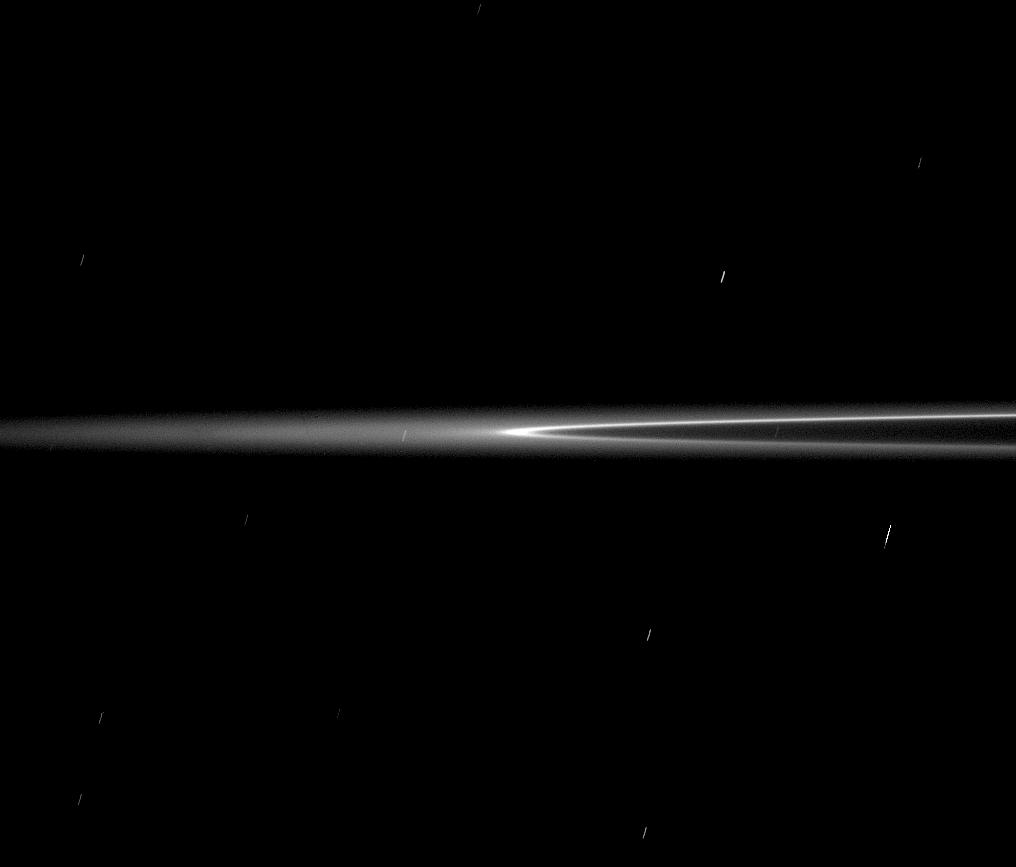Arc in Motion

| PIA Number | PIA10472 |
|---|---|
| Language |
|
The bright arc of material in Saturn's G ring is seen here as it rounds the ring's edge, or ansa. The ring arc orbits Saturn along the inner edge of the G ring.
Cassini spacecraft scientists think the arc contains a population of relatively large, icy particles held in place by a gravitational an orbital resonance with the moon Mimas. Micrometeoroids collide with the large particles, releasing smaller, dust-sized particles that brighten the arc. The plasma in the giant planet's magnetic field sweeps through this arc continually, dragging out the fine particles and creating the G ring. The ring arc orbits Saturn along the inner edge of the G ring.
The diffuse glow at left shows the extended nature of this faint ring.
The ring moved against the background stars during this exposure, creating the star trails seen here.
The view looks toward the sunlit side of the rings from less than a degree below the ringplane.
The upper, brighter ring section is the one closer to Cassini. Here, the ring arc is coming toward Cassini and moving toward right as it rounds the ansa.
The image was taken in visible light with the Cassini spacecraft narrow-angle camera on Aug. 22, 2008. The view was acquired at a distance of approximately 1.2 million kilometers (740,000 miles) from Saturn and at a Sun-Saturn-spacecraft, or phase, angle of 13 degrees. Image scale is 7 kilometers (4 miles) per pixel in the radial, or outward-from-Saturn, direction.
The Cassini-Huygens mission is a cooperative project of NASA, the European Space Agency and the Italian Space Agency. The Jet Propulsion Laboratory, a division of the California Institute of Technology in Pasadena, manages the mission for NASA's Science Mission Directorate, Washington, D.C. The Cassini orbiter and its two onboard cameras were designed, developed and assembled at JPL. The imaging operations center is based at the Space Science Institute in Boulder, Colo.
For more information about the Cassini-Huygens mission visit http://saturn.jpl.nasa.gov . The Cassini imaging team homepage is at http://ciclops.org .
Credit: NASA/JPL/Space Science Institute
